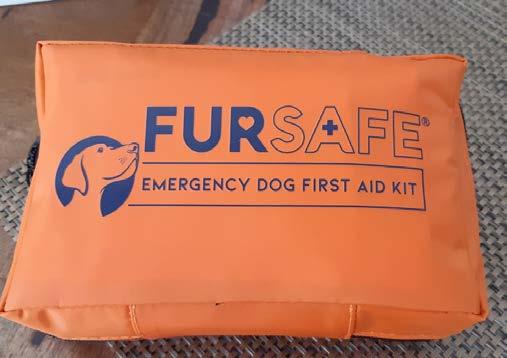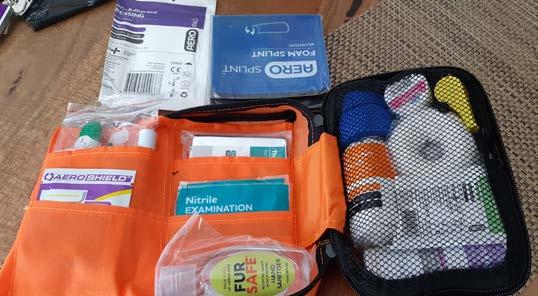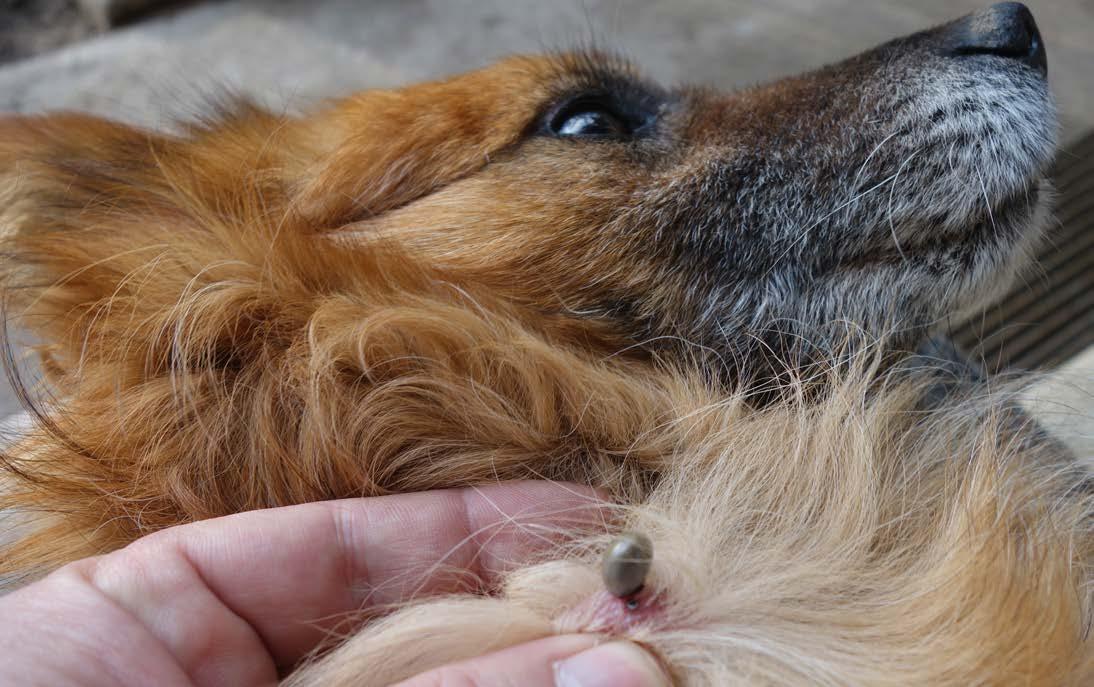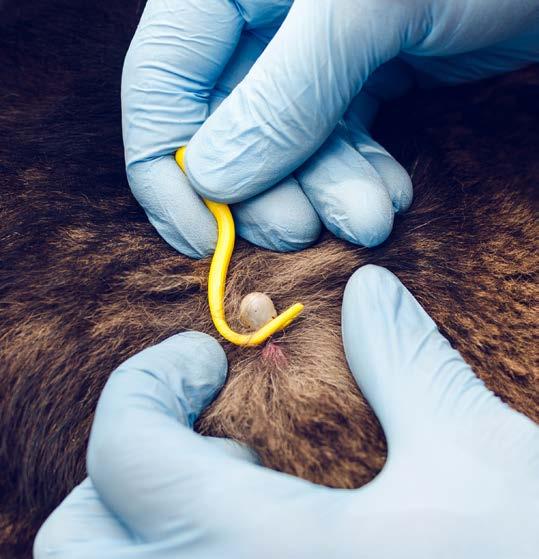
8 minute read
All Breeds Judges – Jason Attridge And Lance Wright
– JASON ATTRIDGE
Growing up in a sporting family and with parents who showed dogs, it was no surprise that after purchasing a Jack Russell Terrier around 20 years ago I was bitten by the ‘Dog Show’ bug.
It wasn’t until 2010 after my involvement in breed and All Breeds clubs that I decided to learn more about my passion and so in 2011 I commenced the Judges’ Training program, studying Group 2.
Throughout the last 9 years I have been blessed to learn from some of the most knowledgeable judges, not just in Queensland or Australia, but world-wide. The time that others have invested in working with me, sharing their knowledge and letting me go over their dogs has truly humbled me and I’ve made so many invaluable friends.
Gaining my All Breeds licence is not just the culmination of this learning but the beginning of a brand new stage in my judging journey – one where I can continue to learn whilst giving back to this wonderful hobby, however I can.
There is no way here I can thank everyone individually who has been there for me, including group coordinators, assessors, mentors or support, but please know this would have not been possible without your generosity of time.
Finally I want to thank my family for putting up with my studying and thank you Nadia for your unwavering support and belief in me. I look forward to this exciting new chapter in my ‘Dog Show’ life.
– LANCE WRIGHT
I was born into the dog world with my parents exhibiting Pekingese, Cocker Spaniels and Italian Greyhounds. I became a successful junior handler very early. At 16 I owned my first show dog, a Toy Poodle female – Ch “Jutland Ooh La La” – who became a multi Best In Show winner in both All Breeds and Speciality show rings. This began my addiction to Poodles. Before long my parents and I had all three varieties which we successfully exhibited and bred for many years.
Moving on, I continued breeding under the “Voila” prefix and successfully exhibited many Best In Show winners including the breed record holder Multi Royal BIS winner Grand Ch “Voila Canadian Club” (Standard Poodle).
Other breeds I have exhibited to Best In Show level are Pekingese, Afghan Hounds, Bedlington Terrier, Irish Setter, Bichon Frise and Scottish Terrier.
My judging career started with my desire to have a license to judge Poodles. I was encouraged to continue with the Toy group. I thoroughly enjoyed the learning process and proceeded through the remaining Groups.
My thanks to the Conformation Judges Committee (CJC) members – both past and present, group co-ordinators and exhibitors for their support and encouragement. And a special thanks to my wonderful parents and my friends for their confidence in me.
FURSAFE® EMERGENCY DOG FIRST AID KIT

The Fursafe® Emergency Dog First Aid Kit is a comprehensive first aid kit with premium medical consumables to assist in the stabilization of life-threatening injuries or illnesses or those that may cause permanent disability to Canines until Veterinarian support can be achieved.
BENEFITS
The Emergency Dog First aid kit has been designed so that you the dog owner or dog professional can provide immediate basic medical intervention in an emergency.
A dog can die within moments; and it will take longer than that to get to the Vet. Taking the time to administer first aid can support the following:

• preservation of life; • prevent the worsening of wounds; • reduce the risk of infection; and • promote recovery
USE
Farming dogs; security working dogs; travelling in caravans, camping, hiking and boating; sporting / agility events and in the home.
FEATURES
• This kit is like no other – it is literally bulging with the necessary consumables to manage a canine injury;
• It has a strong and durable bag; • Small enough that it fits in your car’s glove compartment, in back packs, grab and go bags or even carry on your belt; • It is water resistant so you can wipe it down after being on the grass or in the mud (amongst other things); and
• Is Hi Vis in colour, so it is easy to locate during a stressful time.
CONTENTS
• Elastic cotton crepe bandage • Small and Medium Donut bandages • Diagnostic penlight • Flexible digital thermometer and lubricant • Non-adherent dressing • Sterile gauze swabs • Tick twister set • Foam splint • Emergency whistle • Cohesive bandage with paw image • Non-woven paper tape • Saline wash and scissors • Snake bite bandage with indicator • Emergency thermal blanket • Disposable CPR face shield • Wound Dressing #13 and #14 • Nitrile powder free gloves • Plastic forceps • 50ml hand sanitizer • Wooden tongue depressors • Soda crystals for PAPP and 1080 poisoning
For only $65.00 members can purchase the Fursafe® Emergency Dog First Aid Kit by phoning the Dogs Queensland office on 3252 2661 or email barbara@dogsqueensland.org.au. A postage fee applies if required.
tickPARALYSIS

Joanne Bibby – Fursafe® WARNING
Ixodes Holocyclus! The Paralysis Tick. A tick which may prove fatal to your dog if not found, removed and then treated by a Veterinarian urgently. Paralysis tick season generally runs from Spring into late Autumn 1 , however, in Queensland our warm temperatures and humidity can mean that tick season is pretty much all year round; so, we as dog owners and breeders, must never be complacent when it comes to implementing paralysis tick safety measures. Taking time to try and identify a tick which has burrowed into your dog’s skin is unnecessary. Our goal should be simple: remove any and all ticks found, regardless of the type, and get to the Vet.
POISONING
The tick attaches to the skin and feeds on your dog’s blood, all while excreting a neurotoxin from their saliva. If left untreated, this neurotoxin will cause paralysis of muscles which are responsible for breathing 2 . Tick parasites will attach wherever they can. Generally they will be found at the head and neck area, however you may find them in between toes, inside the mouth and/or around the anus.
ARE THEY IN YOUR AREA?
If you live on the east coast of Australia and/or if you are near bushland or have lots of vegetation or long grasses then the answer is probably yes.
SAFETY PRECAUTIONS
• If possible avoid potential tick areas/habitats when walking your dog; • Do tick checks everyday if you cannot avoid tick habitats; • Apply and maintain tick prevention control products; • Be aware of the signs and symptoms of tick paralysis disease and act immediately. Immediate veterinary attention is needed for any dog showing signs of tick paralysis.
If you notice any of the following, please respond immediately. E.g. ‘my dog’s bark sounds different today’ = act; ‘why is my dog all wobbly’? = act. Don’t wait for multiple symptoms before commencing a head to tail assessment!
Stage 1 • Change in sound of bark • Coughing, retching or gagging • Weakness in hind legs, progressing to front legs • Anxiety • Lethargy Stage 2 • Wobbliness in back legs (appears drunk) • Difficulty getting up • Excessive salivation, drooling • Regurgitation or vomiting • Loud panting, grunting on breathing out • Inability to swallow • Dilated pupils (pupils enlarge) Stage 3 • Body becomes limp (paralysed) • Gums cool to touch • Gums blue in colour • Respiratory failure/cardiac arrest

1. If you begin noticing signs and symptoms of tick paralysis then undertake a Secondary Assessment without delay.
a.
Nose to Tail – Run your fingers along your dog’s body, parting fur as you go, applying enough pressure to feel abnormalities. Use a torch if you notice something odd so as not to pull on skin tags or warts. If you cannot tell, get to the Vet.
i. Use a torch to look inside the mouth, especially gums; around genital areas; in between toes and inside ears.
2.
3. b.
Remove any and all ticks from your dog with your tick twister tool or forceps. i. Try to remove the entire tick, including head, however if you accidently leave the head in the dog, do not panic; remove any and all other ticks and get to the Vet. Keep your dog cool and calm; remove water and food – do not allow pet to eat or drink. Monitor ABC through the entire action process in case symptoms worsen.
a.
b.
c.
Check the airway for blockages or foreign objects; or a missed tick. Remove if there is. Check the breathing (respirations) e.g. count the rise and fall of the chest – start artificial respiration if not breathing. Check circulation (pulse) – start CPR if no pulse. On the way to the Vet; (if you have a driver): • If your dog stops breathing, begin artificial respiration on the way to the vet surgery. • If your dog’s heart stops beating, begin CPR on the way to the vet surgery. References: Virbac 1 Merck Vet Manual 2 Fursafe Emergency Dog First Aid Guide
Fursafe Emergency First Aid Kits are available for purchase from Dogs Queensland office any time Monday to Friday 8am until 5pm for $65.00. Postage is an additional charge. More details are on page 27.





